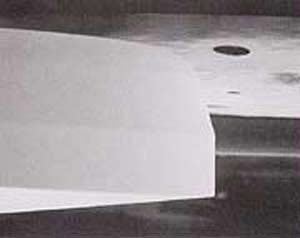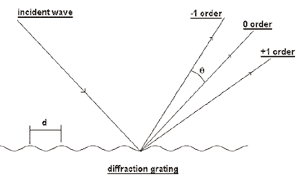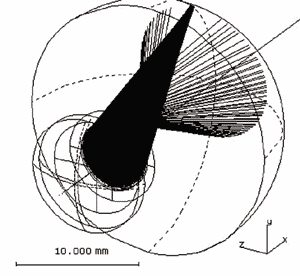OptiEdge performs better than frosted-edge IOL in computer model
Light refraction analysis in a computerized eye model showed that ghost intensity produced by frosted-edge IOLs exceeds that of the OptiEdge design.
FLORENCE – The AMO OptiEdge lens design performed better in a computer model of light refraction than a frosted IOL edge, according to a surgeon here.
|
“We have analyzed light refraction on the frosted edge as we previously did with other IOLs, and found that this type of edge design might not provide sufficient protection against glare and ghost phenomena,” said Alessandro Franchini, MD.
Dr. Franchini said the OptiEdge design, available on several AMO IOL models, is the best option for preventing both posterior capsular opacification and glare in pseudophakic eyes. An IOL with a frosted edge does not achieve the same high standards, he said.
Previous results
In a previous study, Dr. Franchini used a ray-tracing program to analyze light refraction in a computer model of a pseudophakic eye with three types of IOL optic designs: square-edge, rounded-edge and OptiEdge (square posterior and rounded anterior edge).
In that earlier study, Dr. Franchini said, he found that “the square-edge lens optic produces a ghost image of maximum intensity opposite to the primary image, since all light rays are deviated in the same direction. With the round-edge lens, there is a higher dispersion of the light, which is scattered in all directions. The ghost image is therefore more diffuse and less intense. The OptiEdge lens creates an intermediate situation. All the light rays are deviated in the same direction, but more diffusely than with the sharp-edge lens.”
In other words, he added, the intensity of glare with a square-edge lens is 10 times greater than with a rounded-edge lens, while with OptiEdge glare is three times greater than with a rounded edge and three times less than with a squared edge.
Decrease of ghost intensity
A frosted-edge IOL design has been proposed to maintain the square-edge design but overcome the problem of glare. Roughening the edge surface with a series of microwrinkles would theoretically deviate the light in multiple directions when it strikes the edge of the lens.
“We developed a new algorithm to evaluate the impact of the frosted edge on glare intensity,” Dr. Franchini explained. “We placed upon the cylindrical edge of the lens a sinusoidal grating with casual phase, period and orientation. When impacting with a sinusoidal grating, a ray of light splits into three rays: one of 0 order, which carries 66% of the energy, and two of +1 and –1 order, each carrying 17%.”
The results were visible both as spot diagrams and as three-dimensional reconstructions. The maximum decrease of ghost intensity in the frosted-edge design, compared to a nonfrosted square edge, was 17.5% with a period of 5 microns. This was strictly correlated to the period of the microwrinkles, he said.
“If we rate as 10 the ghost produced by the reflection of light from a square edge, the ghost intensity with a rounded-edge IOL is 1, with OptiEdge is 3.3 and with the frosted edge is 8.3. The frosted edge is still more than twice the score of Opti-Edge,” Dr. Franchini said.
Loss of contrast sensitivity
In Dr. Franchini’s opinion, frosted-edge IOLs have an additional disadvantage. The light scattered by micro-wrinkles on a lens surface is considered an undesirable effect, as the stray light produces a background noise. This noise was represented on three-dimensional computer reconstruction as a foot generated all around the ghost image. In visual terms, this is likely to result in a loss of contrast sensitivity, he said.
He concluded that the OptiEdge IOL design remains the best option, combining the advantages of squared-edge and rounded-edge IOLs.
“It gives the best protection from PCO and minimizes glare to a level which remains below the threshold of perception,” he said.
For Your Information:
- Alessandro Franchini, MD, can be reached at Istituto di Oculistica, Università di Firenze, Viale Morgagni 85, 50134 Florence, Italy; +(39) 055-41-17-65; fax: +(39) 055-43-77-749; e-mail: oculist@unifi.it. Ocular Surgery News could not confirm whether Dr. Franchini has a direct financial interest in the products mentioned in this article or if he is a paid consultant for any companies mentioned.
- Advanced Medical Optics, makers of the OptiEdge IOL, can be reached at 1700 E. St. Andrews Place, Santa Ana, CA 92799 U.S.A.; +(1) 714-247-8200; fax: +(1) 866-872-5635; Web site: www.amo-inc.com.



